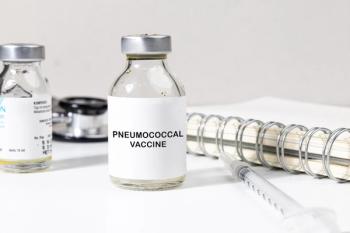
Managing Viral Infections In Pediatric Patients
Data was presented at the 44th National Association of Pediatric Nurse Practitioners Conference regarding the effectiveness of vaccines and antivirals in preventing life threatening conditions.
The concentration from a vaccine of antibodies shifts over time. An initial spike occurs during the primary immune response, dipping during the secondary exposure. Then, a greater spike occurs during the secondary immune response when high affinity antibodies concentrate.
Teri Moser Woo, PhD, ARNP, CPNP-PC, FAANP, presented information1 on how to prevent and treat viral infections in children at the 44th National Conference on Pediatric Health Care in Orlando, Florida.
Woo detailed the vaccine effectiveness (VE) of separate vaccines. The hepatitis A vaccine has a VE of 97% to 100% after the first dose and a VE of 100% after the second dose, while the hepatitis B vaccine has a VE of 75% after the birth dose and a 95% VE in infants, children, and adolescents after the 3-dose series.
Human papillomavirus (HPV9) vaccination is 97.9% effective in children aged 9 to 14 years after 2 doses. After 3 doses, the VE ranges from 93% to 100%.
For influenza vaccines, a match is considered good if VE is 50% to 60%. An overall VE of 39% was seen from 2019 to 2020, and 36% from 2021 to 2022. When examining all vaccines against influenza, a VE of 51% was seen in children aged 6 months to 8 years and a VE of 34% was seen in children aged 9 to 17 years.
Neuraminidase inhibitors were recommended antivirals against influenza. These include oseltamivir (Tamiflu; Roche) in patients aged 1 year and older, zanamivir (Relenza; GlaxoSmithKline) in patients aged 7 years and older, and peramivir (Rapivab; BioCryst Pharmaceuticals) in patients aged 2 years and older.
Adverse events from neuraminidase inhibitors include nausea and vomiting from oseltamivir, bronchitis, cough, and shortness of breath from zanamivir, and diarrhea, vomiting, and rash from peramivir. Also, oseltamivir isexcreted poorly in breast milk.
Antivirals were also recommended for treating varicella. These include acyclovir (Zovirax; Avet Pharmaceuticals Inc) and valacyclovir (Valtrex; GlaxoSmithKline) and may be nephrotoxic.
When examining COVID-19 vaccines, the Pfizer vaccine had a VE of 92% and the Moderna vaccine a VE of 94% after 2 doses. Protection against severe disease, hospitalization, and death has been seen in children vaccinated against COVID-19, along with a decreased risk of multisystem inflammatory syndrome in individuals aged 5 to 18 years.
To reduce HIV risk, preexposure prophylaxis (PrEP) is recommended, as it reduces HIV risk from sex by 99%.PrEP was approved for use in adolescents in 2018 and is most effective after approximately 7 days of daily use for receptive anal sex and approximately 21 days of daily use for receptive vaginal sex and injection drug use.
When prescribing PrEP in adolescents, safety should be considered, and barriers related to medication should be screened. PrEP should be offered to sexually active gay and bisexual men, heterosexual men and women, and transgender individuals without HIV. Individuals without HIV who inject drugs should also be offered PrEP.
Hepatitis C in found in over 2.4 million individuals in the United States, with genotypes 1a, 1b, 2, and 3 being the most common. Maternal transmission at birth and IV drug use are common sources of infection in children and adolescents.
Regimens for antiviral therapy against hepatitis C are rapidly changing and should be based on genotype. Viral monitoring should occur throughout therapy, though toxicity is rare.
To conclude the presentation, Woo noted viral infections are difficult to treat. Prevention is the best goal to strive for, and new vaccines and therapies are constantly emerging.
Reference
1. Woo TM. Preventing and treating viral infections in children and adolescents. Presented at: 44th National Conference on Pediatric Health Care. March 15-19, Orlando, Florida.
Newsletter
Pharmacy practice is always changing. Stay ahead of the curve with the Drug Topics newsletter and get the latest drug information, industry trends, and patient care tips.















































































































